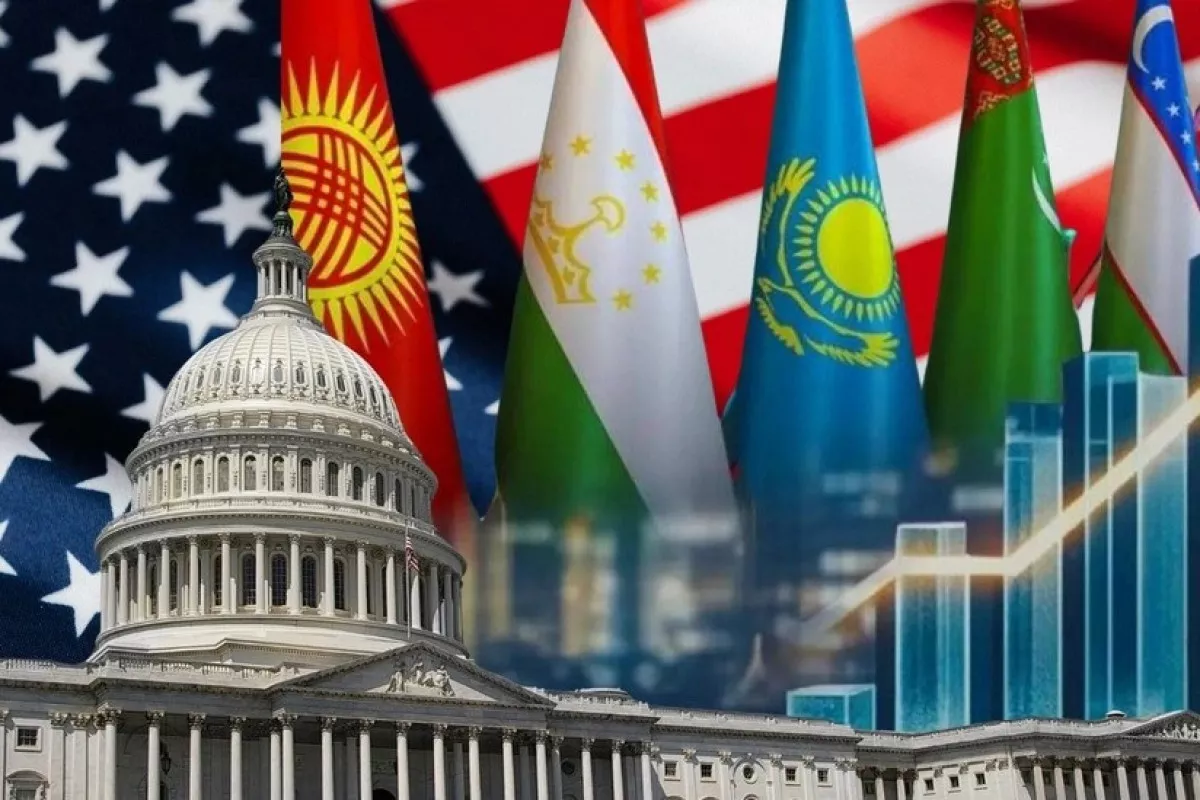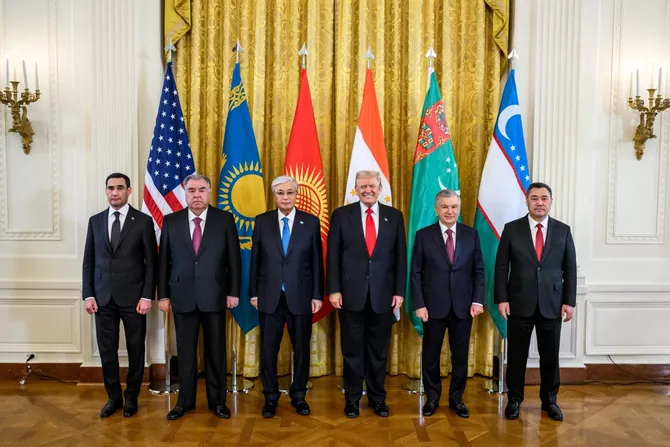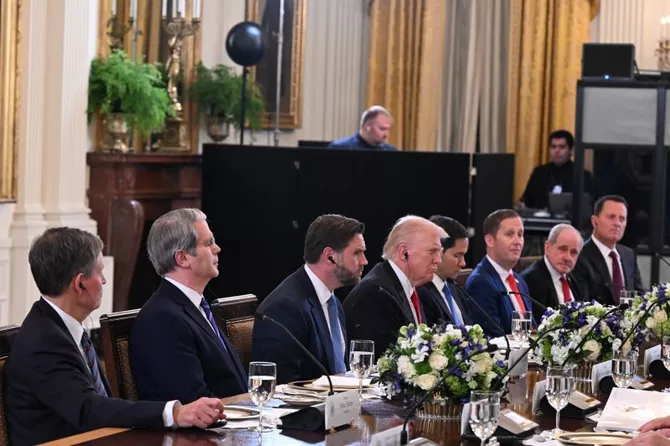
Photo credit: APA
On the evening of November 6, 2025, U.S. President Donald Trump hosted the leaders of the five Central Asian nations - Kazakhstan, Kyrgyzstan, Tajikistan, Turkmenistan, and Uzbekistan - at the White House. According to Western media, the latest summit in the C5+1 format focused on one of the most strategically important issues of our time: access to the region’s rich mineral resources, where both China and Russia have long competed for influence.
Those attending the meeting included Kassym-Jomart Tokayev of Kazakhstan, Sadyr Japarov of Kyrgyzstan, Emomali Rahmon of Tajikistan, Serdar Berdimuhamedov of Turkmenistan, and Shavkat Mirziyoyev of Uzbekistan.
Until the inauguration of the 47th U.S. president, Central Asia had largely remained outside the scope of Washington’s strategic interests, with previous administrations focusing primarily on the European Union, Southeast Asia, Latin America, and the Middle East.
Now, however, the United States is signaling a clear policy shift toward a region that has traditionally gravitated toward Beijing and Moscow. “We are strengthening our economic partnerships, improving cooperation in security, and expanding our shared ties,” President Trump said before a formal dinner with the Central Asian leaders. Emphasizing this new orientation in U.S. foreign policy, he added, “One of the key items on our agenda is critical minerals.”
These minerals - rare earth elements essential for advanced manufacturing and clean energy technologies - are currently dominated by China, which holds about 44 million tons of reserves, more than half of the world’s known supply. That figure exceeds the combined reserves of the next six countries by more than 50%, making Beijing the undisputed global leader in this vital sector. For this reason, Washington has been seeking alternative sources of supply, and Central Asia has emerged as a promising partner.
During the White House meeting, several important agreements were signed. President Trump later hailed them on social media as an “incredible trade and economic deal.” The centerpiece of these accords involves Uzbekistan, which, according to the U.S. president, has committed to investing nearly $35 billion over the next three years and more than $100 billion over the next decade in key sectors of the American economy, including aviation, agriculture, and information technology.

Photo credit: Reuters
Uzbekistan’s participation complements that of Kazakhstan, the world’s largest producer of uranium; Turkmenistan, rich in natural gas; and Uzbekistan, which also possesses vast gold reserves. Meanwhile, the mountainous republics of Kyrgyzstan and Tajikistan continue to discover new deposits of valuable minerals, according to AFP.
During the White House summit, the Central Asian leaders were notably generous in their praise for President Trump, reflecting genuine strategic calculation rather than mere diplomacy. Each of these nations seeks to preserve its sovereignty and territorial integrity amid the growing influence of powerful neighbors. For them, building stronger ties with the United States represents not only economic opportunity but also a vital geopolitical safeguard.
One of the most symbolic announcements of the evening came from Kazakhstan, which declared its intention to join the Abraham Accords, a diplomatic framework aimed at deepening relations with Israel and supporting U.S. efforts in the Middle East. Kazakhstan’s government described the move as “natural and logical,” given its long-standing diplomatic ties with Israel. AFP characterized this decision as a symbolic gesture of support for U.S. diplomacy in the region.
The C5+1 summits, bringing together the United States and the five Central Asian nations, have been held since 2015, with the first meeting taking place in Samarkand, Uzbekistan. Most of these gatherings were previously conducted at the level of foreign ministers. The first meeting of heads of state occurred in 2023, when President Joe Biden hosted the same five leaders on the sidelines of the 78th U.N. General Assembly.

Photo credit: CNN
This makes the November 2025 summit only the second in history at the presidential level and the first ever to take place in the White House. According to Reuters, one of the main drivers behind this high-level meeting was the intensifying competition for Central Asia’s mineral resources, a region long dominated by Russian and Chinese influence.
“Washington is seeking new agreements to secure access to critical minerals, energy resources, and overland trade routes that would bypass its geopolitical rivals,” the agency noted.
This year alone, the region has been visited by several world leaders, including European Commission President Ursula von der Leyen, Russian President Vladimir Putin, and Chinese President Xi Jinping. The race for influence in Central Asia is growing increasingly fierce. Kazakhstan remains the world’s leading uranium producer, accounting for nearly 40% of global output in 2014, while together with Uzbekistan, the two countries represent more than half of total global production.
Uranium supplies are especially critical for the United States, which currently imports about 20% of this metal from Russia. Since the Soviet era, Moscow has maintained a strong presence in Central Asia’s energy sector, supplying hydrocarbons and building nuclear power plants across the region.
Meanwhile, China, which shares borders with Kazakhstan, Kyrgyzstan, and Tajikistan, has expanded its footprint through large-scale infrastructure investments.

Photo credit: Reuters
Beijing and Brussels both support the creation of a Trans-Caspian International Transport Route, also known as the Middle Corridor, linking Europe and Central Asia through the Caucasus and bypassing Russian territory. For the United States, Russia poses a relatively smaller challenge than China, whose global competition with Washington continues to intensify.
Against this backdrop, the White House meeting carried deep symbolic weight for the Central Asian participants. In a speech delivered in English, President Tokayev of Kazakhstan described the current era under President Trump as “a new golden age.” He praised Trump’s leadership, saying it had inspired him to pursue the vision of a strong and independent Kazakhstan.
Following the summit, Trump and Tokayev jointly welcomed the signing of more than $17 billion in bilateral agreements between their two nations.
The importance of the summit was also underscored by U.S. Secretary of State Marco Rubio, who met with the foreign ministers of the Central Asian states on November 5, the day before the summit. Rubio acknowledged that Washington had neglected the region over the past decade but was now determined to reverse that course. He announced plans to strengthen trade and investment ties with post-Soviet countries and confirmed that the White House had submitted to Congress a bill to repeal the Jackson-Vanik amendment, a Cold War-era restriction on trade with the USSR and other socialist states.
Although the amendment ceased to apply to Russia in 2012, it still technically remains in effect for Uzbekistan, Tajikistan, Turkmenistan, Kyrgyzstan, and Kazakhstan.
The November 6 summit in Washington proved highly productive for both the United States and the Central Asian nations. It laid the foundation for future cooperation across multiple fronts: energy, mining, trade, infrastructure, and innovation.
As competition between major powers over the vast resources and strategic routes of Central Asia intensifies, this meeting at the White House may well be remembered as a defining moment - one that repositioned the region at the heart of global geopolitics and marked the beginning of a new phase in U.S.-Central Asian relations.
Share on social media